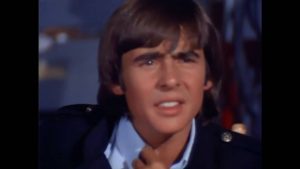Curt Smith From Tears For Fears Has Amazing Taste With His 5 Favorite Album Picks

via Roskilde Festival / Youtube
When reflecting on the music of the 1980s, it’s common to become engrossed in the vibrant, neon-colored fashion trends of the era. From an external standpoint, it appears as though the entire decade was immersed in a Candyland-like atmosphere, with each genre, from hair metal to pop, adorned with a distinctive sheen.
Despite the enchantment derived from synthesizer sounds, Curt Smith of Tears For Fears had a different artistic vision in mind when crafting his masterpieces.
In albums like The Hurting and Songs from the Big Chair, many of Smith’s compositions tackled the darker aspects of life, drawing inspiration from the primal therapy techniques pioneered by therapist Arthur Janov in the 1960s, which also influenced the group’s name.
While figures like Noel Gallagher might regard Tears for Fears as the 1980s counterpart to The Beatles, Smith also acknowledged his indebtedness to the musical albums that preceded his own.
1. Alice Cooper’s Welcome to My Nightmare
When discussing his favorite albums, Smith fondly recalls being captivated by the immersive experience of listening to Alice Cooper’s Welcome to My Nightmare. Described as a haunting concept album, Smith openly acknowledges drawing inspiration from Cooper’s creative strategies.
In an interview with SPIN, he revealed, “Welcome to My Nightmare was the first album I bought and got into. Actually, even looking back on it now, I think a precursor to “Woman in Chains”, which was “Only Women Bleed” from Welcome to My Nightmare, which is a genius song”.
Intriguingly, Smith attributes some of his artistic techniques to the influence of Cooper’s dark and masterful storytelling. He reminisced about the impact Welcome to My Nightmare had on him as a listener, emphasizing how it played a pivotal role in shaping his musical sensibilities.
The admiration for Cooper’s work extends beyond mere enjoyment, as Smith candidly admitted to incorporating elements from the iconic album into his own creative process. This revelation sheds light on the interconnected nature of musical inspiration and the enduring legacy of influential albums like Welcome to My Nightmare.
2. Peter Gabriel’s Scratch
Smith’s songwriting consistently bore the imprint of art rock, a facet of his craft influenced by revered artists such as Peter Gabriel, whom he regarded as a cornerstone of his musical inspiration.
Reflecting on Gabriel’s third venture, affectionately dubbed Scratch, Smith reminisced about it being the first album he deliberately immersed himself in, with a particular admiration for the production finesse evident in tracks like “Games Without Frontiers”.
The artistic resonance between Smith and Gabriel is profound, with Gabriel’s experimental and boundary-pushing approach serving as a guiding influence on Smith’s own musical trajectory. The significance of Gabriel’s impact goes beyond mere admiration, as Smith recognized the pivotal role this early exposure played in shaping his appreciation for intricate production and the nuanced storytelling that characterized his later works.
The thread of influence from Gabriel’s art rock ethos weaves through Smith’s creative tapestry, underscoring the enduring impact of musical pioneers on the evolution of an artist’s craft.
3. The Blue Nile’s A Walk Across the Rooftops
Venturing beyond the conventional boundaries of rock, Smith passionately extolled the virtues of bands like The Blue Nile, singling out their album A Walk Across the Rooftops for its lyrical depth.
Departing from the prevalent themes of love songs during that era, Smith found a profound connection with tracks like “Stay”, where the heartfelt plea for understanding between the singer and their lover resonated far more authentically than the standard “I love you” formula prevalent in love songs of the time.
In Smith’s exploration of musical landscapes, A Walk Across the Rooftops remained a poignant example of lyrical sophistication, diverging from clichéd romantic tropes. The nuanced emotions conveyed in some of its tracks struck a chord with Smith.
This departure from the norm not only underscores the distinctive quality of The Blue Nile’s work but also speaks to Smith’s discerning appreciation for music that transcends formulaic boundaries, paving the way for a richer and more resonant musical experience.
4. Prefab Sprout’s Swoon
Even as he embarked on his initial foray into the realm of music creation, Smith maintained a keen ear for contemporary sounds, finding inspiration in the innovative offerings of bands like Prefab Sprout.
In recounting his admiration for Prefab Sprout’s live performances, Smith drew a compelling comparison, likening them to the musical titans Steely Dan. He expounded on this connection, noting, “They were more in line with Steely Dan than anything pop, even though they were trying to be pop, just chord-wise and musical transitions, it was always stuff that was like ‘Really, they went there?’”.
Smith’s acknowledgment of Prefab Sprout’s artistry reveals a nuanced appreciation for musical complexity, transcending the boundaries of mainstream pop.
The comparison to Steely Dan not only speaks to the musical sophistication of Prefab Sprout but also underscores Smith’s discerning taste and his ability to identify and draw inspiration from artists who elevate their craft beyond conventional expectations.
5. The 1975’s A Brief Inquiry Into Online Relationships
Even in the most recent decade, well into the 2010s, Smith remained actively engaged in exploring the creative endeavors of emerging artists.
He found particular fascination in the artistic trajectory of the English pop rock band The 1975, applauding the transformative journey they guided their listeners through with their 2018 album, A Brief Inquiry Into Online Relationships.
For Smith, the allure of favorite albums was never solely tethered to crafting the most immediately catchy tunes.
Rather, it was about creating a sonic manifesto that transcended the ephemeral, leaving a lasting imprint destined for relevance long after the artist has departed.











